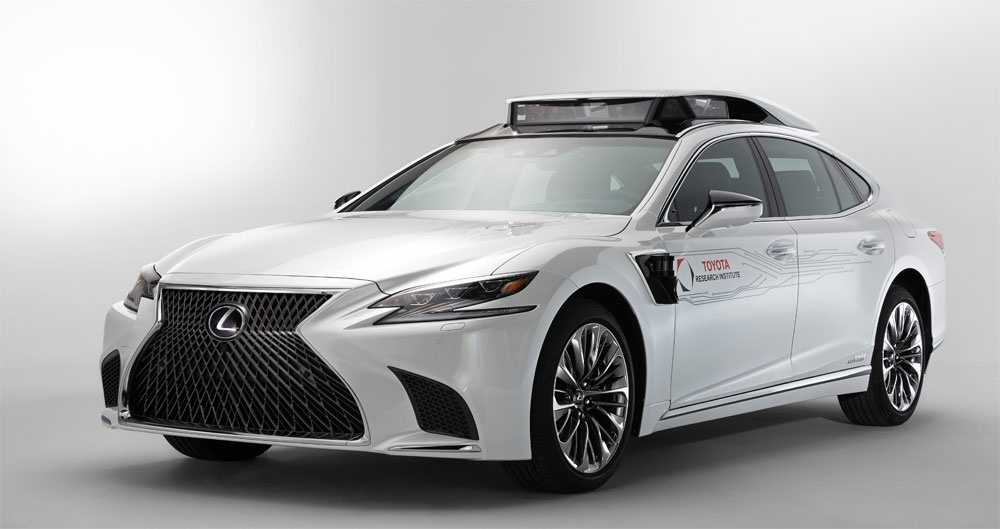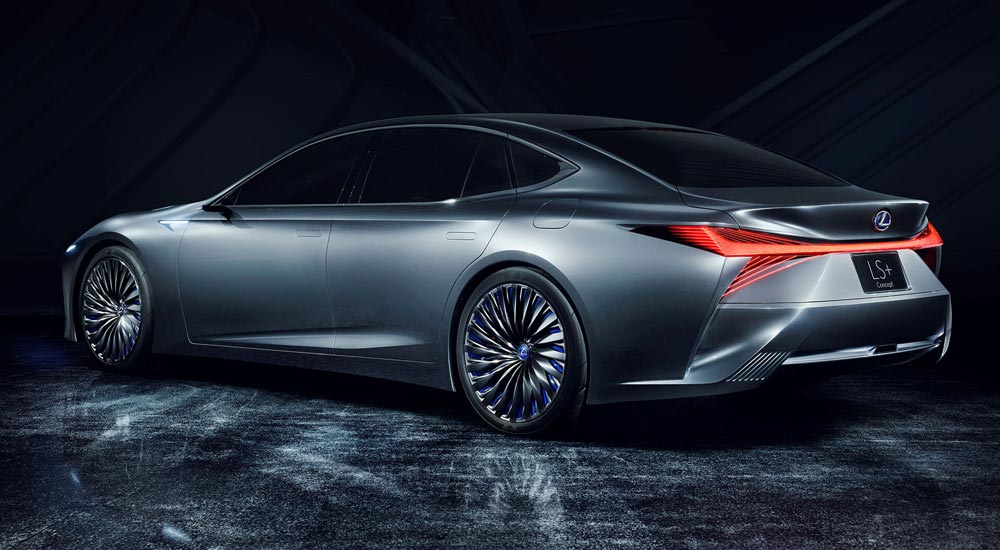February 09, 2019
Toyota's moonshot: Self-driving car for sale - in a year
Goal: ‘Most powerful supercomputer on wheels'
HANS GREIMEL
TOKYO — They call it Toyota's moonshot: In just one year, Japan's biggest carmaker wants to start selling a self-driving vehicle that it says will be the "most powerful supercomputer on wheels."
But the company has a lot of work to do first. It must develop hardware and software for the vehicle, dramatically slash the cost of the technology and ramp up the hiring of the software engineers who will make it all happen.
That's the challenge facing James Kuffner, CEO of Toyota Research Institute Advanced Development Inc., or TRI-AD. His Tokyo company was set up in March to spearhead Toyota's attempt to bridge the gap between research and the showroom floor.
The first milestone comes in 2020, when Toyota plans to introduce vehicles capable of driving themselves on highways. Kuffner said they would be rolling supercomputers.
"The prototypes and the preproduction vehicles that the team is building here at TRI-AD are going to be … the most intelligent supercomputer on wheels," Kuffner said late last month at TRI-AD's temporary office near Tokyo Station. "We've called it the moonshot of my generation to build this technology and bring it to market."
Toyota teamed with Toyota Group suppliers Aisin Seiki and Denso to invest $2.8 billion in the new company to create the software that runs self-driving vehicles.
Kuffner, an American, took the helm after a stint as chief technology officer at Toyota Research Institute, its future-looking research counterpart in Silicon Valley.
TRI-AD is tasked with making the 2020 technology, called Highway Teammate, a reality.
"If you think about building a research prototype, making a demonstration is pretty easy, but making a product is really hard," Kuffner said. "Whenever we talk about our company, we often talk about being a bridge of the prototype to the product."
Doing so means building a software company from scratch inside one of the most bureaucratic and traditional automakers in Japan. And the company is only partway there.
Chasing talent
TRI-AD has about 500 employees crammed into temporary space on two floors of a Tokyo high-rise. But this summer, it will move into new digs next door with room for 1,000 engineers on five floors. It will take several years to fill those ranks, Kuffner said, noting increasingly fierce competition worldwide to hire the best software and artificial intelligence engineers.
Toyota has more than one advanced prototype of the 2020 vehicle. A modified Lexus LS sedan is the mobile laboratory. Kuffner said the 2020 vehicle will also be a Lexus.
That is partly a function of cost. The car will need hardware and software not yet in production, Kuffner said. The array of advanced cameras, lidars and radars won't be cheap.
"This is our first automated vehicle," said Ken Koibuchi, TRI-AD's chief technical officer. "It has very high-performance computing and very rich sensors. So, it means very expensive. To deploy in middle-class vehicles, we have to reduce costs dramatically."
Koibuchi declined to give a figure but said cost must drop by more than half of today's levels.
Creating a culture
Part of the challenge will be cultivating a Silicon Valley-like corporate culture in the middle of Tokyo. TRI-AD will target development of "production-quality software for automated driving," partly by harnessing big data collected from connected vehicles.
"We have to embrace software and ride the wave like a software company," said Nikos Michalakis, who worked on cloud computing at online video streaming service Netflix and is now TRI-AD's vice president in charge of the software platform. Indeed, TRI-AD will institute a so-called Software Dojo as a kind of in-house school to teach Toyota employees computer culture.
"Our goal is to teach a Silicon Valley mindset here," Michalakis said.
Toyota and its partners already team on software development, but Toyota hopes to jump-start progress by combining efforts under one roof with an expanded staff and bigger budget.
"We know we can't do it alone, so we've forged strong partnerships," Kuffner said.
Creating the self-standing autonomous driving unit may help Toyota lure top computing talent as automakers increasingly compete against high-tech companies for talent.
Although TRI-AD is in Tokyo, English will be its business language. About 80 percent of the staff is Japanese, but several of the top officers are non-Japanese.
"People actually respond well to our mission," Kuffner said.
"I can tell a top-talented software engineer, 'Would you like to write software to sell ads, or would you like to write software to save lives?' " he said. "And they'll join us."



